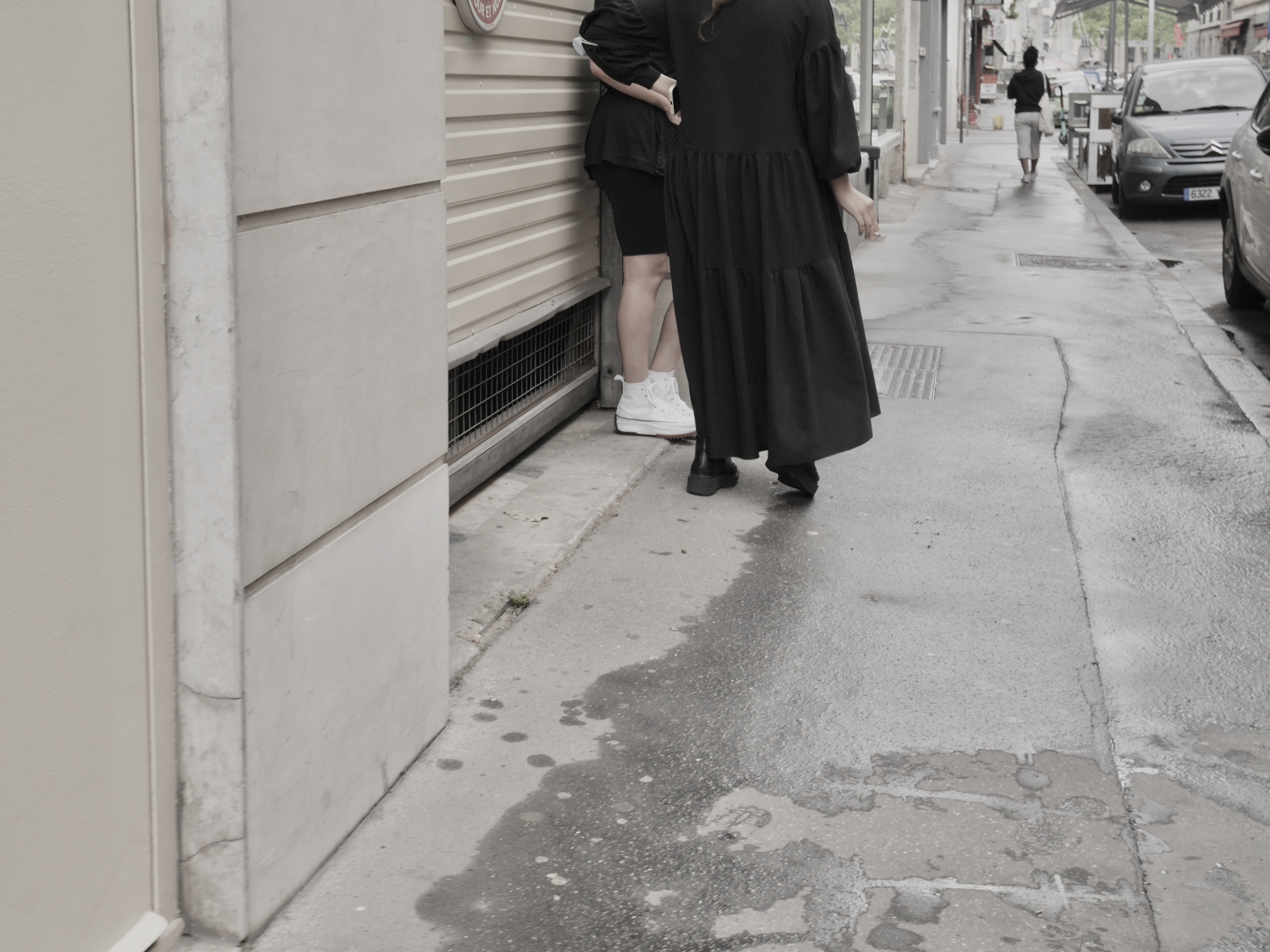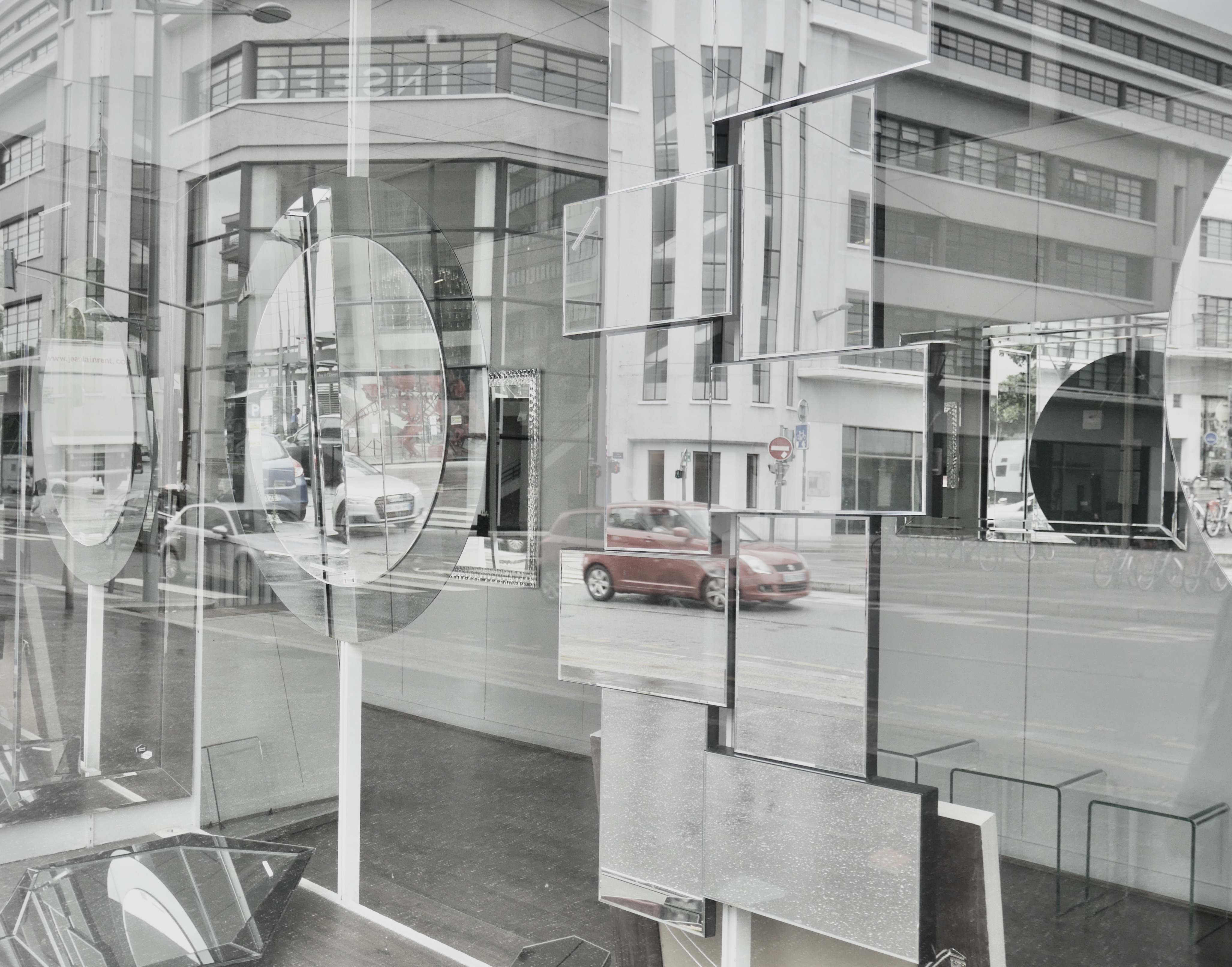I have always been a keen observer of my environment. Since my childhood, my sensibility to light, shape, and color has molded my perception of the world as a complex and organic network of visual layers. As a result, when my mother gave me my first camera, I tried to translate this perception of my surroundings into photography.
On the one hand, I focused on architectural photography as a medium to explore contrast, perspective, and multidimensional image construction, as well as to break down different architectural movements ranging from gothic architecture to art nouveau, from neoclassicism to postmodernism. On the other hand, I delved into experimental photography in order to inquire deeper into the manifold interactions between light and shadows, blurring and sharpness, texture and luster, warmth and coldness, reflection and distortion, reality and optical illusions. Drawing inspiration from choreographic works such as “Bella Figura” by Jiří Kylián, “Scenario” by Merce Cunningham, “Vollmond” by Pina Bausch or “Signes” by Carolyn Carlson, I aimed to create conversations between visual perception and space.
Yet, throughout my photographic practice, I gradually realized that a piece of the puzzle was missing. Pictorialism belonged to the past: merely focusing on aesthetics and composition wasn’t enough. In his essay “Le message photographique” (“The Photographic Message”), French philosopher and semiologist Roland Barthes writes that although one can be tempted to regard photography as an utmost analogon of the world that provides direct mediation to reality, it conveys in fact two coexisting messages, one with and one without a code. This leads to a “photographic paradox” between the codeless message as a perfect copy of reality (the “photographic analog”) and the implicit rhetoric that lies behind the photograph (the “rhetoric of photography”). Thus, Barthes concludes that photography cannot be neutral.
All through my photographic work, I came across the same observation. Photography cannot only be about portraying reality accurately: paradoxically, since objectivity cannot possibly be reached, there is always an additional layer of meaning beneath its surface—a standpoint. As a result, instead of attempting to get rid of my own subjectivity, I tried to embrace it as a creative propeller by exploring street photography. In search of Henri Cartier-Bresson’s “decisive moment”, inspired by photographers like Saul Leiter, Helen Levitt, Robert Frank or Susan Meiselas, I attempted to grasp the transiency of all things human. As French poet Guillaume Apollinaire put it in his 1918 conference “L’Esprit nouveau et les Poètes” (“The New Spirit and the Poets”): “One can start with an ordinary incident: a dropped handkerchief can be for the poet the lever with which he can lift and create an entire universe.”
On the one hand, I focused on architectural photography as a medium to explore contrast, perspective, and multidimensional image construction, as well as to break down different architectural movements ranging from gothic architecture to art nouveau, from neoclassicism to postmodernism. On the other hand, I delved into experimental photography in order to inquire deeper into the manifold interactions between light and shadows, blurring and sharpness, texture and luster, warmth and coldness, reflection and distortion, reality and optical illusions. Drawing inspiration from choreographic works such as “Bella Figura” by Jiří Kylián, “Scenario” by Merce Cunningham, “Vollmond” by Pina Bausch or “Signes” by Carolyn Carlson, I aimed to create conversations between visual perception and space.
Yet, throughout my photographic practice, I gradually realized that a piece of the puzzle was missing. Pictorialism belonged to the past: merely focusing on aesthetics and composition wasn’t enough. In his essay “Le message photographique” (“The Photographic Message”), French philosopher and semiologist Roland Barthes writes that although one can be tempted to regard photography as an utmost analogon of the world that provides direct mediation to reality, it conveys in fact two coexisting messages, one with and one without a code. This leads to a “photographic paradox” between the codeless message as a perfect copy of reality (the “photographic analog”) and the implicit rhetoric that lies behind the photograph (the “rhetoric of photography”). Thus, Barthes concludes that photography cannot be neutral.
All through my photographic work, I came across the same observation. Photography cannot only be about portraying reality accurately: paradoxically, since objectivity cannot possibly be reached, there is always an additional layer of meaning beneath its surface—a standpoint. As a result, instead of attempting to get rid of my own subjectivity, I tried to embrace it as a creative propeller by exploring street photography. In search of Henri Cartier-Bresson’s “decisive moment”, inspired by photographers like Saul Leiter, Helen Levitt, Robert Frank or Susan Meiselas, I attempted to grasp the transiency of all things human. As French poet Guillaume Apollinaire put it in his 1918 conference “L’Esprit nouveau et les Poètes” (“The New Spirit and the Poets”): “One can start with an ordinary incident: a dropped handkerchief can be for the poet the lever with which he can lift and create an entire universe.”



© 2021-2025 AMA. All Rights Reserved.
